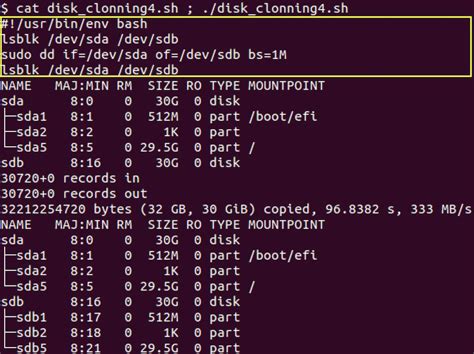centos 7 clone not booting properly | clonezilla not cloning disk centos 7 clone not booting properly Is the bios declaring the boot failure or do you get to grub? Did you do a full disk clone or a partition clone? For starters this link might help (its for grub2 , introduced in centos 7). $371. Louis Vuitton LV Slim Bracelet Monogram Eclipse Black. Lowest Ask. $290. Louis Vuitton by Tyler, the Creator Pocket Organizer Vanilla Craggy Monogram. Lowest Ask. $497. Louis Vuitton Slender Wallet Monogram Eclipse. Lowest Ask. $435. Louis Vuitton LV Initiales 35mm Reversible Belt Monogram Eclipse. Lowest Ask. $619.
0 · linux cloned disk
1 · clonezilla won't boot
2 · clonezilla not cloning disk
3 · clonezilla not booting linux
4 · clonezilla cloned disk not booting
5 · centos7 dracut boot error
6 · centos vhdx boot error
LV Boost 30mm Reversible Belt. $690.00. With their sleek straps and gleaming signature buckles, Louis Vuitton’s belts for women are chic, versatile – and an indispensable fashion accessory. Made from the Maison’s iconic Monogram or Damier canvases, or from a variety of luxurious leathers, these waist-defining pieces are available in a .
linux cloned disk
Is the bios declaring the boot failure or do you get to grub? Did you do a full disk clone or a partition clone? For starters this link might help (its for grub2 , introduced in centos 7). I'm trying to make my brand-new HP Z4G4 workstation boot to CENTOS 7 from its SSD drive, but after it indicated which kernel it's using, spins its wheel, and shows its faint "7" .
clonezilla won't boot
The clone was successful but when I try to boot, it fails and I end up with the GRUB prompt. The disk contains a Centos 7 installation and I understand that grub refers to the boot .
Run this in the VM before you clone it: dracut --force --no-hostonly. After you clone the VM, boot it and run: dracut --force. If you've already cloned the VM, you can connect the virtual disk to IDE to boot it (as noted by others) and .
I have now unplugged my 3TB drive and am trying to boot to my 500gb drive, but it loads an initramfs shell and never launches to mint. What do I need to do to get my cloned .
With kernel 3.10.957 the boot process goes fine. I tried to run a yum update which installed a new kernel (and initramfs) and boot with latest kernel, but problem persists. I tried to change the .
How about changing boot options like EFI to legacy BIOS before cloning? If clonezilla won’t work, you could just boot-up with any Linux CD and do a basic disk to image . In this tutorial we are going to show you how you can clone a block device, typically a hard-disk on top of which we run a CentOS 8/7 server (or any Linux distribution .
Administrators can use these shells to fix any issues that prevent the system from booting normally; for example, a dependency loop between services, or an incorrect entry in /etc/fstab. .
clonezilla not cloning disk
For cases when the system will not boot after reaching the grub2 menu. You should start by editing the grub menu and searching for syntax errors. If you find one, correct it and . Is the bios declaring the boot failure or do you get to grub? Did you do a full disk clone or a partition clone? For starters this link might help (its for grub2 , introduced in centos 7). I'm trying to make my brand-new HP Z4G4 workstation boot to CENTOS 7 from its SSD drive, but after it indicated which kernel it's using, spins its wheel, and shows its faint "7" on the screen, it goes to emergency mode. The clone was successful but when I try to boot, it fails and I end up with the GRUB prompt. The disk contains a Centos 7 installation and I understand that grub refers to the boot partition via its UUID (in grub.cfg) and the same UUID is used in /etc/fstab for the /boot partition.

Run this in the VM before you clone it: dracut --force --no-hostonly. After you clone the VM, boot it and run: dracut --force. If you've already cloned the VM, you can connect the virtual disk to IDE to boot it (as noted by others) and run the first command. I thought I could clone a running CentOS 7.7 installation by replicating the contents of the /, /boot, /boot/efi partitions on the target disk and then modifying the /etc/fstab and the grub.cfg files to allow for the UUID changes. I have now unplugged my 3TB drive and am trying to boot to my 500gb drive, but it loads an initramfs shell and never launches to mint. What do I need to do to get my cloned 500gb drive to boot correctly?
With kernel 3.10.957 the boot process goes fine. I tried to run a yum update which installed a new kernel (and initramfs) and boot with latest kernel, but problem persists. I tried to change the UUID of the boot partition and updating the grub config, but results are the same.
How about changing boot options like EFI to legacy BIOS before cloning? If clonezilla won’t work, you could just boot-up with any Linux CD and do a basic disk to image copy: cat /dev/sda > /mnt/usb/73gb.img
Since today, I cannot boot into my Linux CentOS 7. I am directly taken to emergency mode. I have tried the following commands without success: sudo umount /dev/sdb1 and sudo fsck -p /dev/sdb1. I have included the journalctl output for reference. In this tutorial we are going to show you how you can clone a block device, typically a hard-disk on top of which we run a CentOS 8/7 server (or any Linux distribution such as RHEL, Fedora, Debian, Ubuntu, etc.). Is the bios declaring the boot failure or do you get to grub? Did you do a full disk clone or a partition clone? For starters this link might help (its for grub2 , introduced in centos 7). I'm trying to make my brand-new HP Z4G4 workstation boot to CENTOS 7 from its SSD drive, but after it indicated which kernel it's using, spins its wheel, and shows its faint "7" on the screen, it goes to emergency mode.
The clone was successful but when I try to boot, it fails and I end up with the GRUB prompt. The disk contains a Centos 7 installation and I understand that grub refers to the boot partition via its UUID (in grub.cfg) and the same UUID is used in /etc/fstab for the /boot partition. Run this in the VM before you clone it: dracut --force --no-hostonly. After you clone the VM, boot it and run: dracut --force. If you've already cloned the VM, you can connect the virtual disk to IDE to boot it (as noted by others) and run the first command.
I thought I could clone a running CentOS 7.7 installation by replicating the contents of the /, /boot, /boot/efi partitions on the target disk and then modifying the /etc/fstab and the grub.cfg files to allow for the UUID changes. I have now unplugged my 3TB drive and am trying to boot to my 500gb drive, but it loads an initramfs shell and never launches to mint. What do I need to do to get my cloned 500gb drive to boot correctly? With kernel 3.10.957 the boot process goes fine. I tried to run a yum update which installed a new kernel (and initramfs) and boot with latest kernel, but problem persists. I tried to change the UUID of the boot partition and updating the grub config, but results are the same. How about changing boot options like EFI to legacy BIOS before cloning? If clonezilla won’t work, you could just boot-up with any Linux CD and do a basic disk to image copy: cat /dev/sda > /mnt/usb/73gb.img
vintage ysl logo
Since today, I cannot boot into my Linux CentOS 7. I am directly taken to emergency mode. I have tried the following commands without success: sudo umount /dev/sdb1 and sudo fsck -p /dev/sdb1. I have included the journalctl output for reference.

clonezilla not booting linux
clonezilla cloned disk not booting
centos7 dracut boot error
Featured in Nicolas Ghesquière’s Cruise 2024 show, the LV Iconic 20mm Reversible Belt updates the classic Monogram signature with a brighter, more contemporary color palette. Monogram Dune canvas is paired with sumptuous semi-aged natural cowhide on the reverse side, accented by a gleaming gold-finish LV Iconic buckle.
centos 7 clone not booting properly|clonezilla not cloning disk




























